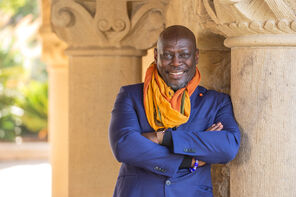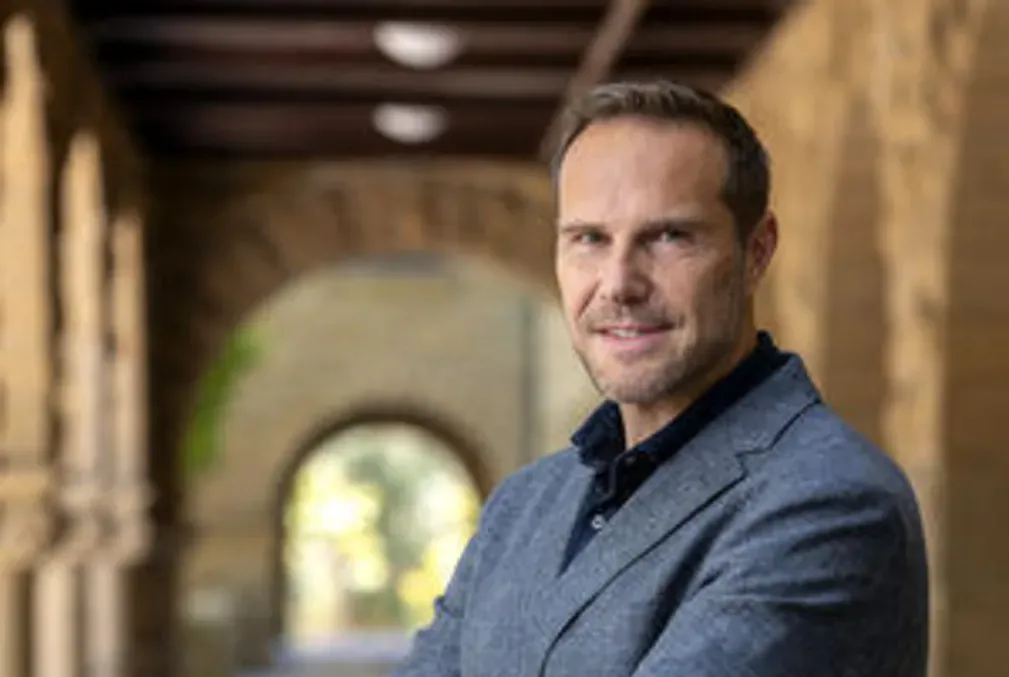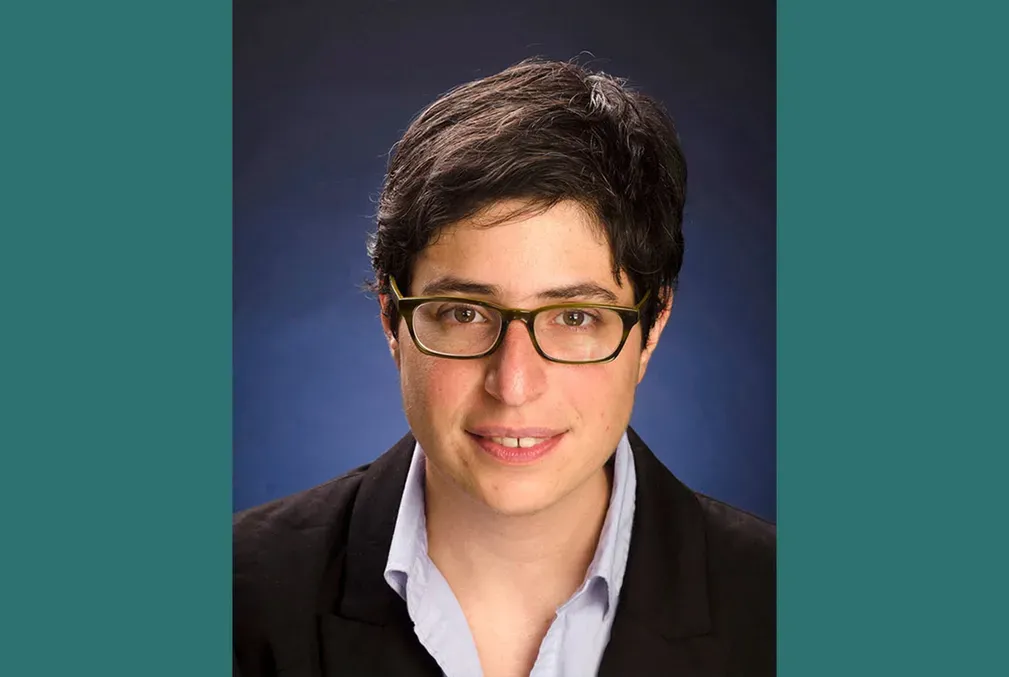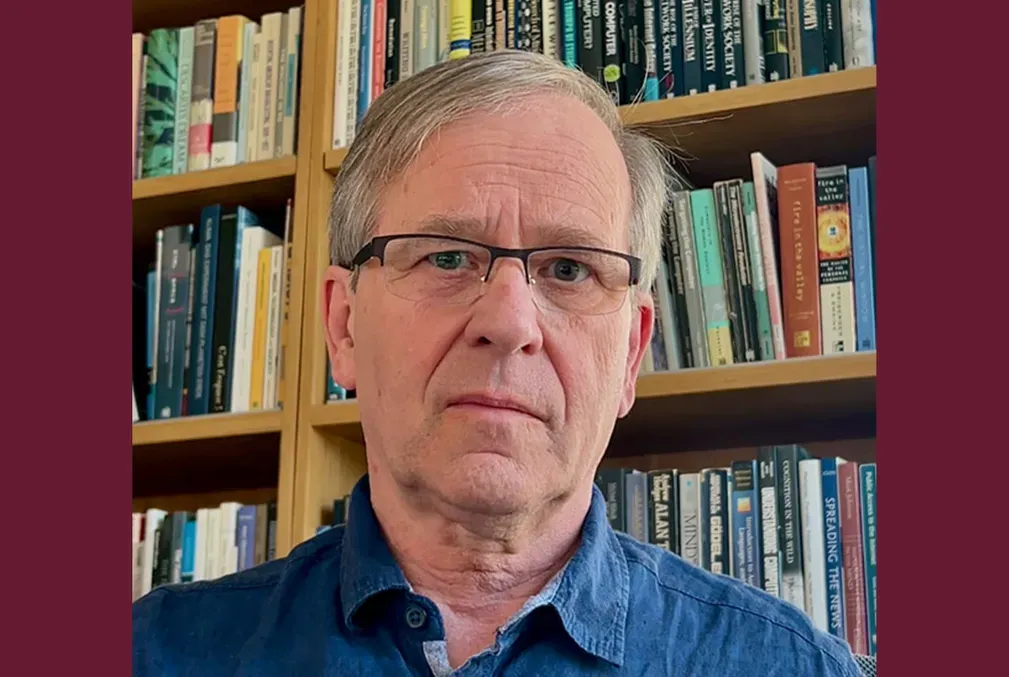New Department of African and African American Studies marks historic moment at Stanford
Stanford’s new Department of African and African American Studies will offer three tracks—African Studies, African American Studies, and Global Black Diaspora Studies—providing undergraduates with a comprehensive understanding of the field of Black Studies.
On Jan. 1, the Stanford Department of African and African American Studies in the School of Humanities and Sciences officially launched, after 55 years as an interdisciplinary program. This new department was created in recognition of the growing need for students to learn about and engage in Black Studies. It will be located in the Main Quad starting in fall 2025, pending permitting and construction. For now, DAAAS is located in Building 360.
In this interview, the inaugural department chair, Ato Quayson, the Jean G. and Morris M. Doyle Professor in Interdisciplinary Studies and professor of English, discusses the significance of DAAAS and why it was created, how the new curriculum and faculty will educate students about Black Studies, and aspects of the new department about which he is most excited.
Question: How did the new department come to be?
Quayson: The departmentalization can be traced back to the inception of the African and African American Studies interdisciplinary program. In April 1968, the members of the Stanford Black Student Union interrupted a campus assembly following the assassination of Dr. Martin Luther King, Jr. Ascending the stage, the group took the microphone from Provost Richard Lyman and read a list of ten demands they had crafted to boost African American admissions, curriculum, hiring, and broader representation at Stanford. The interdisciplinary program was established shortly after that. But it did not take long for lobbying to start to convert it into a full department so as to align with what was happening at peer institutions such as Harvard, Cornell, and Berkeley, all of whom set up their AAAS departments in the late ’60s and early ’70s.
Moreover, the 1968 “Take back the mic” protest that led to the program’s founding took place within a larger ecosystem of organizing for racial justice on campus. Calls for departmentalization continued through the following decades, but it was the killing of George Floyd in 2020 that finally changed the environment for the reception of the idea of departmentalization.
In February 2021, then Provost Persis Drell announced that the Framework Task Force—which was charged with proposing a new framework on the study of race at Stanford—recommended the departmentalization of AAAS. This announcement followed the tireless organizing of student advocates during the year, capping a 50-year history of lobbying for the departmentalization of AAAS. The Committee on the Departmentalization of AAAS was convened in May 2021. After Debra Satz, dean of the School of Humanities and Sciences, and the provost gave their approvals, the Board of Trustees approved the new department at its October 2023 meeting.
Question: What is new about the undergraduate major in DAAAS?
Quayson: I am excited to share that the new undergraduate curriculum will have three tracks: African American Studies, African Studies, and Global Black Diaspora Studies. In addition, there will be a community engaged learning requirement, and students will be required to study a language of their choice (e.g., French, German, Portuguese, Jamaican Creole, Yoruba).
In order to help students understand the global context of their studies, there will be opportunities through Stanford’s Bing Overseas Studies Program for immersive summer learning expeditions to different parts of the United States, the Caribbean, Africa, and Europe. In summer 2024, BOSP will offer a study abroad program in Accra, Ghana.
Since student learning takes place both inside and outside the classroom, the department will develop a holistic advising structure that will enhance the experience of students’ academic lives by aligning with their values of community building, self-care, and transforming the world for the better.
There will be various opportunities for creative expression in collaboration with the Institute for Diversity in the Arts and the Creative Writing Program in the Department of English, and there will also be opportunities for summer internships in collaboration with the Stanford Graduate School of Business SEED program.
Question: What’s the difference between the AAAS interdisciplinary program major and the DAAAS major?
Quayson: In contrast to the interdisciplinary program’s curriculum, the DAAAS curriculum has different tracks, a community engaged learning component, and a foreign language requirement. There will be three distinct tracks, which I already mentioned. Students in each track will also take breadth requirements in the other two tracks so that they graduate with a comprehensive understanding of the field of Black Studies.
In addition to the community engaged learning component I mentioned earlier, the foreign language requirement, which is relevant to understanding the broad view of Black Studies both in the United States and elsewhere, is one way that students can fulfill Stanford’s foreign language requirement. However, rather than make students learn these languages without specific reference to their chosen majors, the new DAAAS curriculum will scaffold the language requirements throughout the major in capstones, honors theses, and learning expeditions in the summer as well as in stand-alone courses specifically designed to test for proficiency and application.
In most parts of the world, multilingualism is the norm, and monolingualism is an anomaly. In Ghana, I grew up being told that if you speak only one language it means you must have something to hide. Our goal is for students to take studying other languages seriously. We do not want them to assume that English is the only language suitable for understanding Black Studies, the world at large, or, indeed, themselves.
Question: Can students earn a graduate degree?
Quayson: We plan to introduce a master’s and doctoral program in the next three years. Graduate curriculums must be reviewed and approved by several groups, including the school’s curriculum committee, the Academic Council’s Committee on Graduate Studies, and the Faculty Senate.
Question: Who will be the new faculty in DAAAS?
Quayson: Initially, eight current Stanford faculty, including myself, will have joint appointments with DAAAS:
- Jennifer Brody, professor in the Department of Theater and Performance Studies*
- Joel Cabrita, the Gordon and Dailey Pattee Faculty Fellow in the Humanities and Social Sciences; associate professor in the Department of History; and the Ford Dorsey Director of the Center for African Studies
- Rachel Jean-Baptiste, the Michelle Mercer and Bruce Golden Family Professor in Feminist and Gender Studies; professor in the Department of History; and director of the Program in Feminist, Gender, and Sexuality Studies
- Lerone A. Martin, the Martin Luther King, Jr. Centennial Professor; associate professor in the Department of Religious Studies; and director of the Martin Luther King, Jr., Research and Education Institute
- Grant Parker, the Louise and Claude Rosenberg, Jr. University Fellow in Undergraduate Education; the Nehal and Jenny Fan Raj College Faculty Fellow in Undergraduate Education; and associate professor in the Department of Classics
- Vaughn Rasberry, associate professor in the Department of English
- A. Van Jordan, the Humanities and Sciences Professor I, poet, and professor in the Department of English in the Creative Writing program
We are currently hiring two new faculty in the areas of Caribbean Studies and Black Studies in the Arts, with several other faculty to be hired over the next five years. Ultimately, the plan is to have 13 faculty in DAAAS.
Question: What kinds of events and programs are you planning?
Quayson: We have a number of events that will strengthen and celebrate our community: A speaker series bringing experts in Black Studies from across the United States and elsewhere; an annual Black Arts Festival (music, poetry, art, and more); an annual cookout featuring Black cuisines; a faculty/staff and student mentorship program; town halls; and learning expeditions to different parts of the Black world. Town halls will be held at least once a year to get input from students and other stakeholders about the department’s growth and development. The first town hall will be held in January 2024 to share and discuss the architectural plans for DAAAS so that students can begin to visualize themselves in the space ahead of September, when students can officially declare the DAAAS major and minor.
The mentorship program will pair faculty and staff with cohorts of six or seven students each year. Mentors will have quarterly lunches with their mentees at the Faculty Club and will advise students on various aspects of university life, including how to identify academic mentors, opportunities for internship and summer abroad programs, and other resources to promote their well-being, which will, hopefully, make their time at Stanford both productive and enjoyable. The main principle behind the mentorship program is not to duplicate academic advising but rather to add a different level of social facilitation in addition to what the university residence halls already provide.
Question: What are you most excited about?
Quayson: I look forward to building a center of excellence in Black Studies not only at Stanford but also across the United States and the rest of the world. Through BOSP, we will offer various learning expeditions to places like Ghana, Jamaica, and, in the future, Brazil, and all of these will also offer opportunities for community engaged learning. However, community engaged learning is not simply about giving our students the chance to translate their knowledge for use in these communities; we also want them to understand and see firsthand that these communities are legitimate producers of knowledge in Black Studies. Thus, the new department will build relationships with Black communities in the Bay Area, California, the U.S., and in different parts of the world.
We will also establish internships with organizations across a broad spectrum, such as in Silicon Valley, university presses, and nongovernmental organizations as well as newspapers and magazines so as to provide our students with many opportunities for evolving their understanding of themselves in relation to job opportunities in different sectors.
Finally, we want all Stanford students to feel welcome in the new department, irrespective of their identity and background. Our belief is that Black Studies provides a diversity of ways of thinking about the ethics of difference, the dynamics of identity formation, and the sense of what it is to be global citizens in a diverse and rapidly changing world. The DAAAS faculty want to bring together a community of students and scholars in Black Studies to act together as transformational changemakers in the world in which we live.
*Professor Brody will join the DAAAS faculty in fall 2024.
DAAAS faculty (from top left): Jennifer Brody. Photo by Lava Thomas; Joel Cabrita. Photo by Harrison Truong for Stanford University; Rachel Jean-Baptiste. Photo by LiPo Ching / Stanford University; Lerone A. Martin. Photo by Andrew Brodhead / Stanford News Service; Grant Parker. Photo by Harrison Truong for Stanford University; Vaughn Rasberry. Photo by LiPo Ching / Stanford University; and A. Van Jordan. Photo by Do Pham / Stanford University
Note: The first day that undergraduate students will be able to declare the DAAAS major or minor is Sept. 1, 2024.
In addition, students who wish to continue their major or minor in the African and African American Studies interdisciplinary program are free to do so; students can declare the AAAS IDP major and minor through August 31, 2024 (the AAAS IDP remains a program in H&S but will no longer accept new majors and minors after Sept. 1).





